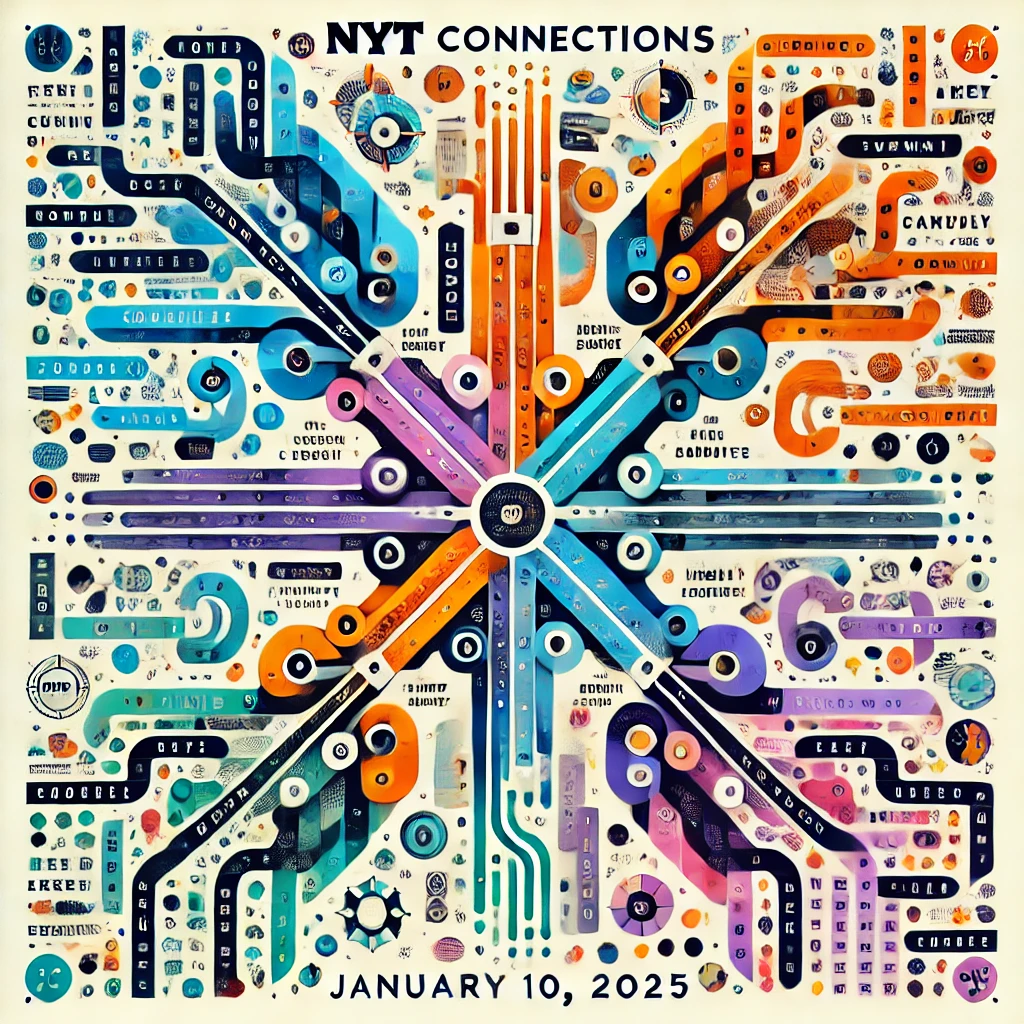The New York Times Connections puzzle has become a popular mental exercise, challenging players to group related words into thematic categories. The game relies on sharp observation and critical thinking, requiring solvers to recognize subtle connections between words that might initially seem unrelated. Today’s puzzle, identified as January 10 #579, presented a unique mix of categories ranging from linguistic nuances to mathematical concepts.
The Puzzle Setup: Categories at a Glance
The puzzle’s four categories demanded players identify themes tied to specific ideas. These categories included:
- Words Denoting Contingency or Dependence
- Phrases Used to Address Overly Emotional Reactions
- Ingredients Found in an Old Fashioned Cocktail
- Elements of the Monty Hall Problem
Each category challenged solvers to think laterally and recognize contextual meanings. Below is a breakdown of each category, the words that fit within them, and the reasoning behind their selection.
Category 1: Be Contingent (On)
This category encompassed words that denote reliance or dependence. The words included:
- Depend
- Hinge
- Rely
- Rest
These terms all imply a relationship where one entity depends on another for support, decision-making, or action. The challenge arose from subtle overlaps in meaning. For instance, rest could also imply relaxation, potentially misleading solvers toward another category. Additionally, understanding “contingent” as a passive verb added complexity. Once the thematic focus became clear, these words fell neatly into place.
Category 2: Calm Down
This category contained words often used to address someone experiencing heightened emotions. The selected words were:
- Chill
- Easy
- Enough
- Relax
These terms are commonly associated with de-escalating tension or calming an agitated individual. Initially, some of these words might seem descriptive rather than directive, making the grouping less apparent. Words such as chill and relax are often standalone directives, while easy and enough rely heavily on context to convey their soothing intent.
Category 3: Ingredients in an Old Fashioned
The words in this category represented components of a classic cocktail, the Old Fashioned. These included:
- Bitters
- Orange
- Rye
- Sugar
Recognizing this group required familiarity with cocktail recipes. While bitters and sugar are well-known staples of the Old Fashioned, rye may be less immediately associated, as it refers to the whiskey variant used in the drink. Orange adds a hint of fruitiness, enhancing the overall flavor profile. The challenge here involved distinguishing these ingredients from other potential groupings, particularly given that words like sugar and orange might appear in non-cocktail contexts.
Category 4: Featured in the Monty Hall Problem
This category drew inspiration from the famous probability puzzle known as the Monty Hall Problem. The related words were:
- Car
- Door
- Goat
- Host
The Monty Hall Problem is a statistical brainteaser derived from a television game show setup. Contestants choose one of three doors, behind which lies either a car (the prize) or a goat (a dud). The host introduces a twist by revealing a goat behind one of the unselected doors and offering the contestant a chance to switch their choice. These elements—car, door, goat, and host—are critical to the puzzle’s framework. While this category’s theme might seem obscure, recognizing its connection to probability and game theory provides clarity.
Solving the Puzzle: Strategies and Challenges
The Connections puzzle tests a solver’s ability to recognize subtle relationships between words. Key challenges include:
- Contextual Ambiguity
Words like rest and easy might fit into multiple categories depending on interpretation. Misplacement of a single word can disrupt the entire puzzle. - Specialized Knowledge
Categories like the Monty Hall Problem require familiarity with niche topics. Similarly, understanding cocktail ingredients demands cultural or culinary knowledge. - Overlapping Themes
Some words, such as sugar and relax, may initially seem to belong in multiple categories. Distinguishing between these requires careful consideration of context and meaning. - Linear Thinking Pitfalls
Assuming straightforward definitions for all words often leads to incorrect groupings. Flexible thinking is essential to untangle the nuanced connections.
Insights From Today’s Puzzle
The puzzle reveals how language and culture intersect in unexpected ways. Each category highlights different cognitive skills:
- Language Interpretation: Categories like “Be Contingent (On)” challenge solvers to think about linguistic relationships and dependency.
- Emotional Context: “Calm Down” emphasizes the emotional nuances of language, particularly how words are used to communicate tone and intent.
- Cultural Literacy: Recognizing “Ingredients in an Old Fashioned” requires familiarity with cultural artifacts like cocktails.
- Problem-Solving Frameworks: The Monty Hall Problem draws on mathematical and logical reasoning, blending these with real-world scenarios.
Broader Reflections on Word Games
The Connections puzzle underscores the complexity of word games as tools for mental stimulation. Unlike simpler games that rely on direct word matching, Connections demands pattern recognition, lateral thinking, and cultural awareness. Games like this also promote deeper appreciation for language’s versatility and the layered meanings behind everyday terms.
Beyond entertainment, these puzzles have practical benefits, enhancing cognitive skills such as memory, critical thinking, and problem-solving. For enthusiasts seeking to master such puzzles, strategies like focusing on contextual meaning, eliminating unlikely options, and leveraging prior knowledge are invaluable.
Conclusion
The NYT Connections puzzle for January 10, 2025, offers a rich exploration of linguistic, cultural, and logical themes. From emotional directives to mathematical conundrums, the categories and their solutions showcase the depth and breadth of human cognition. For solvers, the challenge lies in balancing intuition with logic, drawing on both knowledge and creativity to uncover the hidden connections. As word games continue to evolve, puzzles like Connections remind players of the joy and complexity inherent in language.










